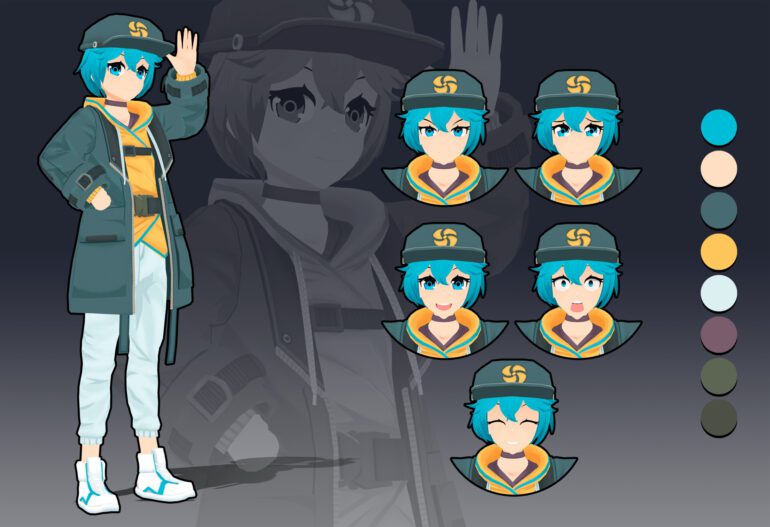TL;DR:
- Moemate, a cutting-edge AI assistant, introduces a novel approach to AI interactions.
- It leverages a combination of advanced models, including GPT-4 and Claude, to provide optimal responses.
- Moemate’s standout feature is real-time screen analysis, offering a deeper context for user queries.
- The concern over privacy is addressed through local storage of data, with cautious data utilization policies.
- Moemate’s adaptability and customization capabilities make it a promising contender in the AI assistant space.
Main AI News:
In the rapidly evolving landscape of AI assistants, the limitations of traditional models have paved the way for remarkable advancements. As the iconic Cortana fades into obsolescence, the quest for more effective digital aides continues. The tech giants are at the forefront of this revolution, with Amazon and Google leading the charge.
Amazon, for instance, is in the process of crafting a robust large language model, akin to OpenAI’s GPT-4, to empower its voice-enabled assistant, Alexa. On a parallel track, Google is gearing up to infuse its Google Assistant with a dose of AI reminiscent of Bard, an algorithm-powered chatbot that embodies a newfound prowess in conversational interactions.
Yet, this paradigm shift isn’t exclusive to the dominion of Big Tech. Startups, too, are realizing their visions of more astute and user-centric AI assistants. Among these intriguing ventures is Moemate, an AI assistant compatible with macOS, Windows, and Linux systems. Embodying a charming anime-style avatar, Moemate leverages a combination of cutting-edge models, including GPT-4 and Anthropic’s Claude, to provide users with optimal responses to their inquiries. The term “Moe,” deeply rooted in Japanese culture and often associated with cuteness in anime, lends its name to this captivating creation.
While the likes of ChatGPT, Bard, and Bing Chat already offer similar functionalities, Moemate distinguishes itself by delving beyond mere text-based cues. It possesses the remarkable ability to analyze a user’s screen in real time, observing the ongoing activity on a PC’s display. The potential implications for privacy and security are evident; however, Webaverse, the company behind Moemate, asserts that it prioritizes local storage of chat logs and preferences, though it retains the right to utilize collected data in compliance with legal mandates.
Curiosity compelled me to take Moemate for a test run, despite its potential privacy implications. Currently available as an open beta, Moemate impressed me with its robustness and flexibility. Virtually every aspect of the experience can be personalized, from avatar appearances and animations to the nuances of Moemate’s synthetic voice and replies. Notably, it even facilitates the creation and import of custom character models.
Moemate’s “personality” is molded by a selection from various text-generating models, allowing users to tailor their interactions. Synthetic voices, powered by ElevenLabs, Microsoft Azure, or Moemate’s proprietary text-to-speech engine, further elevate the engagement. A particularly intriguing feature is Moemate’s use of biographical snippets to ground the chosen text model, preventing it from veering off track. For instance, an avatar named Nebula is introduced as a serene voyager exploring the cosmos of knowledge, a captivating concept that lends depth to interactions.
However, the freedom to craft and edit biographies does raise concerns about potential misuse, particularly in the realm of prompt injection attacks. These attacks aim to circumvent safety filters with cleverly worded texts, potentially leading to the distribution of malicious avatars among unsuspecting users.
Appealing to the Twitch community, Moemate offers functionalities tailored to content creators, though I was unable to test these features myself. It claims the ability to engage users during lulls in chat activity and even interact with stream chats. The effectiveness of these features remains to be seen.
Moemate truly shines when responding to fundamental queries. Its performance is intrinsically linked to the chosen text-generating model, while its skill set extends to extracting insights from various windows on a screen, ranging from browser tabs to application settings. Although the mechanism behind this capability is somewhat elusive, Moemate extracts and processes text from screen captures, then feeds this data to the model.
Undoubtedly, the system isn’t flawless. There are occasional hiccups, with Moemate sometimes misidentifying or disregarding active windows. It might drift into unrelated tangents during interactions, yielding unexpected but often amusing results. While some built-in commands might be inconsistent, the promise of future improvements and expanded automation capabilities holds great potential.
Despite its experimental nature, Moemate’s amalgamation of text and image analysis showcases the power of multimodality. This is particularly compelling in the context of a PC-based assistant. It prompts speculation about the potential future direction of AI assistants, like Windows Copilot, which could potentially integrate screen comprehension and text-generation capabilities to revolutionize productivity and workflow efficiency.
Conclusion:
Moemate’s innovative approach of combining text-based interactions with real-time screen analysis presents both opportunities and challenges. The integration of multimodal capabilities could potentially reshape the AI assistant market, prompting other players to explore similar avenues to enrich user experiences and productivity, while addressing privacy concerns.

